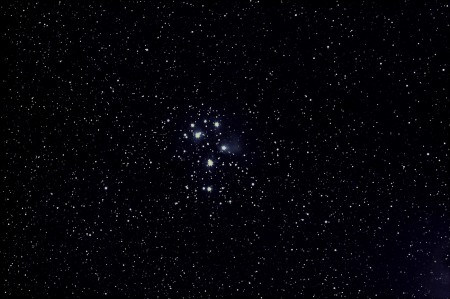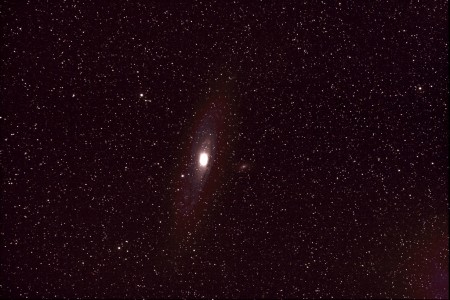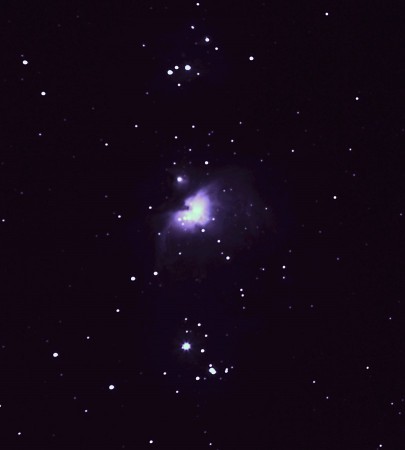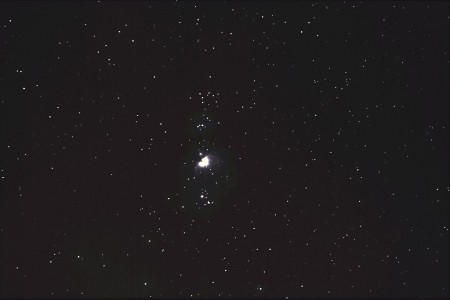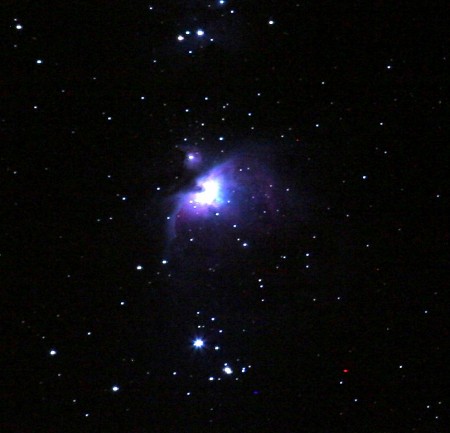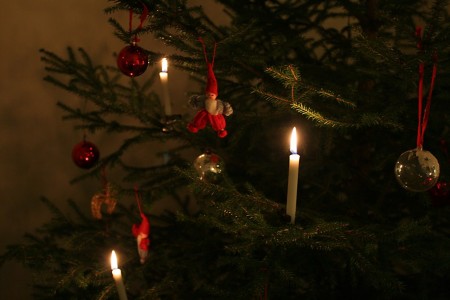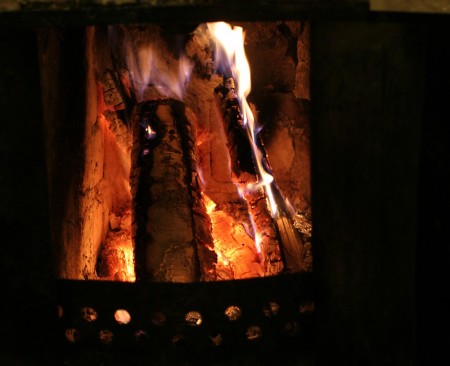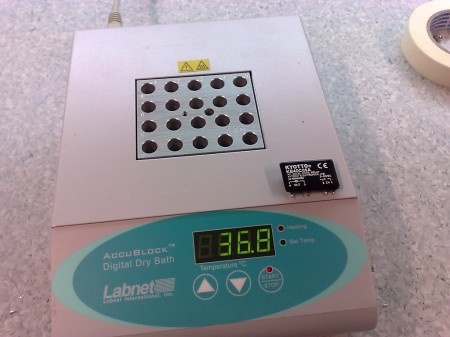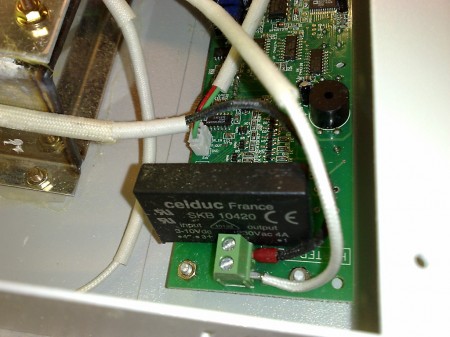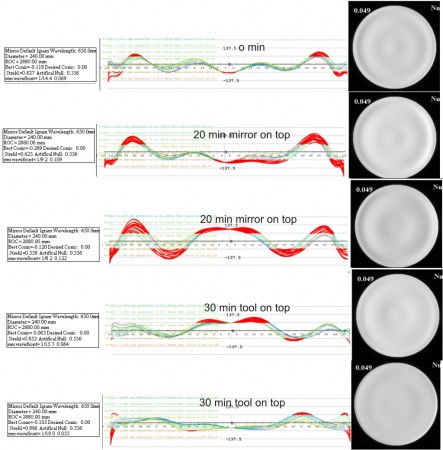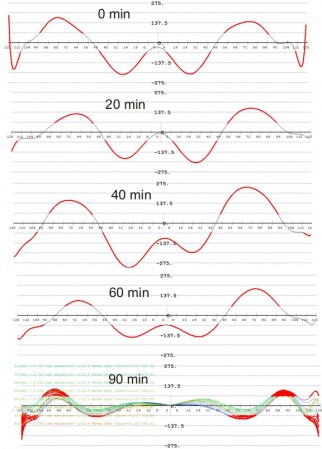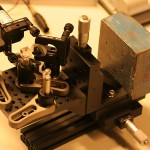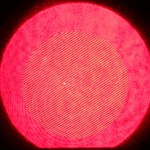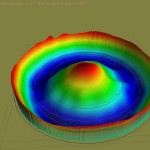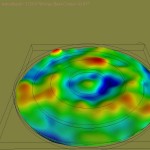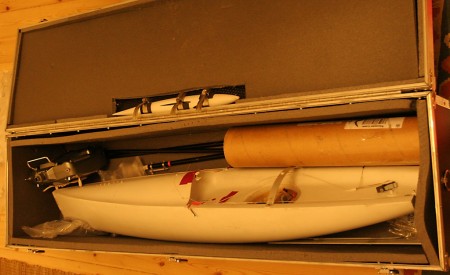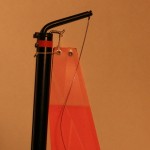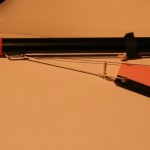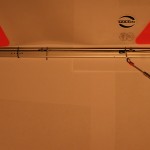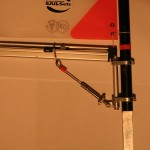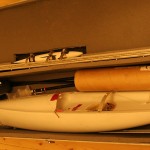200mm F/5.6 lens. 20x60s exposure at iso3200.
Andromeda Galaxy (M31)
Orion nebula (M42)
It seems like ages since the skies were clear last time. Must be around 2 months I think. Last evening however was good for astrophotography again. My target was the Orion nebula, or M42.
I took 40 sub-exposures, each 60s long, but half of them were out of focus :(, and a couple of the remaining ones had star-trailing due to vibration or me pushing the mount or something. The end result is a stack of 14 images, so 14 x 60s = 14min total exposure time. There is software out there to help with focusing, I'm looking at Nebulosity in particular. A DewNot dew-heater worked really well, no more problems with dew or frost on the lens.
Canon 20D wtih 70-400/4L lens set to 200mm and F/5.6: Unguided EQ-6 mount. Stacked with DeepSkyStacker with 10 dark frames (no flats or bias frames). The image above is a 100% crop, below is the full frame:
This site is about a 35min drive away. It allows exposing for 1-4 minutes at F/5.6. That's almost good enough, if you look at the "why autoguide" slides of Craig Stark's talk (especially the SNR plot at ca 7:20), it's clear that single exposures of a few minutes are required to reach good SNR.
The noise is supposed to be 1/sqrt(14)=3.7-fold lower in the stack above, but I'm not very impressed by how it looks compared to this single 60s frame:
Merry Christmas
Styyra 2008
The annual newsletter of the Finnish radio-sailors is out today:
Heater fix: SSR replaced
The heating elements on this heater just kept on heating and heating independent of the temperature. I first checked the thermocouple that measures temperature - but that seemed OK, so the next thing I suspected was the solid-state relay that turns on/off the heating. Turns out this initial guess was right, and I was lucky we had a replacement on the shelf, so now the heater works again. The picture above shows the broken SSR on the right.
New SSR in place.
Sunday polishing
Out pitch-lap is one that really doesn't work when polishing mirror-on-top. Should have realized that yesterday. The first two 20min sessions today were spent making the shape of the mirror worse, before we switched to tool-on-top for the last 30min + 30min. Suddenly it all goes much better, and we are back to a nice better than 1/10 wave sphere. We still see small dots from a laser-pointer reflection, so it's not time for figuring just yet.
The graph shows the wavefront error in nm, compared to a sphere. The Foucault images on the left are simulated from a zernike fit to the surface measurement.
Polishing continues
Something must have been wrong with the pitch-lap on Friday, since we began today with a strange bump in the middle of the mirror. The picture shows how the shape of the mirror (actually the wavefront, compared to a sphere) changed through today's polishing session. Slowly getting back to a good spherical shape. Hopefully the mirror will be polished out soon and we can start figuring it into a paraboloid.
Bath interferometer v2
Second try at a Bath interferometer. This time with a diode-laser, which has a larger output beam and results in more even illumination. Analysing the interferogram with OpenFringe and the Fourier-method shows our mirror is fairly spherical, 1/27th of a wave RMS from a sphere, but we have some figuring to do to get it paraboloidal.
Wave goodbye, wish me well
FIN-43, my current Noux-design IOM, is packed and ready for shipping to its new owner next week. I made a holder for the bulb from tube-clamps, and disassmbled the rigs today. Everything fits nicely into my 110x30x26 cm boat box.
The plan for 2009 is to cnc-mill plugs and make moulds for a variant of Pikanto, Graham Bantock's latest design. It's important to use time and effort on good design and good moulds. I want the boat and the components to come out of the moulds almost ready to use. Keep it simple stupid. CAD-design time and time on the cnc-mill is cheap, hours spent moulding and hand-building are expensive (for me anyway). More about that later. It also looks like we will be milling a new set of bulb, fin, and rudder moulds in December-January. We're happy to mill moulds for other people too, but most people don't answer the second email where I tell them a fin-mould costs 500 euros (which we think is reasonable).
